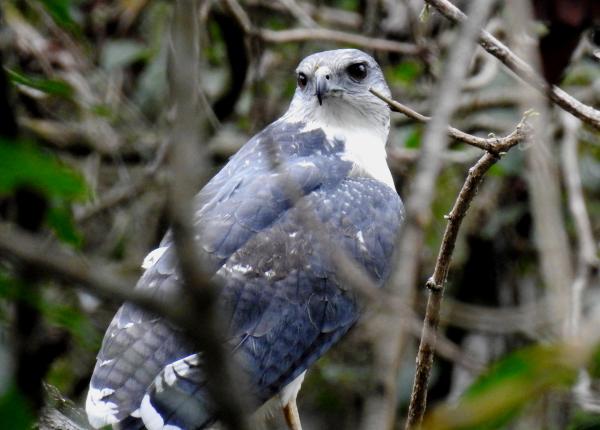Did You Know?
- There is still a lot scientists don't know about the Gray-backed Hawk
- It is an opportunistic hunter, taking nearly most any prey it can catch.
How The Peregrine Fund is Helping
Though The Peregrine Fund does not work directly with Gray-backed Hawks, our efforts in scientific research, habitat conservation, education, and community development help conserve birds of prey around the world. We also supply literature to researchers from our avian research library, which helps scientists around the world gather and share important information on raptor conservation. Our work with the Neotropical Raptor Network helps conserve raptors by fostering collaboration and communication among raptor enthusiasts in the region. And, finally, our support of the Global Raptor Information Network gives raptor researchers tools to more efficiently conduct their own studies while contributing to a global program. It also provides citizen scientists a way to participate in raptor science and conservation.
Where They Live
This South American species makes its home in a number of different forest types, including both deciduous and evergreen forests, as well as Tropical Dry Forest, Tropical Moist Forest, and Tropical Cloud Forest. If you ever find yourself in Gray-backed Hawk territory, keep you eyes peeled for this bird perched about mid-level in the surrounding trees. Researchers have described this species as "easily approachable."
Why They Need Our Help
The Gray-backed Hawk is an endangered species. Today, it is only found in a few remaining patches of forest throughout some of its range. Continued deforestation for the construction of roads, agricultural fields and human settlements is a major threat to this species.
What They Eat
Like many hawk species, the Gray-backed Hawk has a long list of prey items on its menu. It will feed on reptiles - especially snakes, birds, mammals - such as rice rats, amphibians, crustacea, beetles, katydids, and even earthworms!
Nests, Eggs, and Young
Gray-backed Hawks build stick nests which are relatively small, and often well hidden high up in a tree. They line the nests with fresh leaves. The female will lay 1 egg, which must be incubated for around 36 days. The job of incubating the egg falls solely on the female while the male is responsible for hunting enough food to feed himself and the female.The young birds will fledge around 76-84 days, perhaps even sooner.
Gray-backed Hawk and the World Center for Birds of Prey
The World Center for Birds of Prey offers fun ways to learn about birds of prey. The visitor center offers interactive displays, tours, interesting videos and a children's room with activities from coloring sheets to quizzes to costumes and a touch table for the curious mind. We also have several different birds of prey on display year-around. Knowledgeable staff and volunteers are on hand to answer any questions you may have about Gray-backed Hawks or any other birds of prey.
References:
Bierregaard, R. O., G. M. Kirwan, D. A. Christie, and P. F. D. Boesman (2020). Gray-backed Hawk (Pseudastur occidentalis), version 1.0. In Birds of the World (J. del Hoyo, A. Elliott, J. Sargatal, D. A. Christie, and E. de Juana, Editors). Cornell Lab of Ornithology, Ithaca, NY, USA. https://doi.org/10.2173/bow.gybhaw2.01









